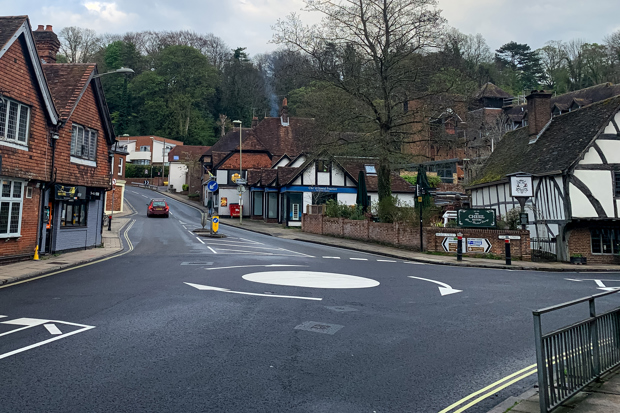Question of the week: Do pedestrians have priority when crossing at roundabouts?

Dear Honest John,
"This question has been asked twice previously on here and received two seemingly contradictory answers.
Pete asked: "Following introduction of new pedestrian priority at junctions, does this rule also apply when leaving or joining a roundabout?"
Sarah Tooze replied: "Yes, the rule change to give priority to pedestrians waiting to cross the road applies at junctions and when crossing side roads so does include roundabouts."
David Ross replied with reference to sections of the Highway Code that describe the requirements for junctions as being separate from the requirements at roundabouts. Upon re-reading David's answer, my interpretation of the facts he has quoted is that: No, the explicit requirement does not exist for a driver to give way to a pedestrian who is waiting to cross the road at the entry or exit of a roundabout.
I will concede that David's answer aligns with my own sense of 'what seems practical' for roundabout use. Roundabouts, as I understand it, are intended to promote the free flow of traffic whereas junctions, by design, result in cars stopping and waiting frequently. It is not a surprise when the car in front of you stops at a junction.
Do I now need to anticipate that the car in front of me may stop while exiting a roundabout to give way to a pedestrian, as per Sarah's answer to Pete's question?
- JS
Dear JS,
Further to the previous answer, there is a difference between the guidance given for junctions and roundabouts in respect of pedestrians and vehicle road users.
Rule 170 of the Highway Code states 'give way to pedestrians crossing or waiting to cross a road into which or from which you are turning. If they have started to cross they have priority, so give way' and refers back to Rule H2.
For roundabouts, Rule 185 states 'Watch out for all other road users already on the roundabout', which we have to assume includes pedestrians and Rule 187 states 'In all cases watch out for and give plenty of room to - pedestrians who may be crossing the approach and exit roads.'
By the letter of the Highway Code there is no specific instruction to give way to pedestrians at roundabouts as there is for junctions, although it is also important to note that the guidance is 'should' and not 'must'.
The latter is a legal requirement and breach of this law could result in prosecution, whereas a breach of the former is unlikely to result in prosecution but could be used as evidence against you in support of charges related to other offences.
It is also worth bearing in mind that the introduction to sections 103 to 158 of the Highway Code states 'The rules in The Highway Code do not give you the right of way in any circumstance, but they advise you when you should give way to others.'
If you were to assume that every road user intimately studied the minutiae of the Highway Code on a regular basis you could enter or exit a roundabout in confidence that the vehicle in front would not stop for a waiting pedestrian, but as this seems somewhat unlikely we would suggest that erring on the side of caution would be the best approach.
Good defensive driving requires observation and anticipation and that includes considering that any other road user could perform an action that is not in accordance with the rules of the road.
Any road user could stop at any time for any number of reasons, whether valid or otherwise. In the vast majority of circumstances it would be the driver failing to stop in time that would be held responsible for any collisions that occurred as a result.
Can we contest a 50/50 insurance claim decision?


